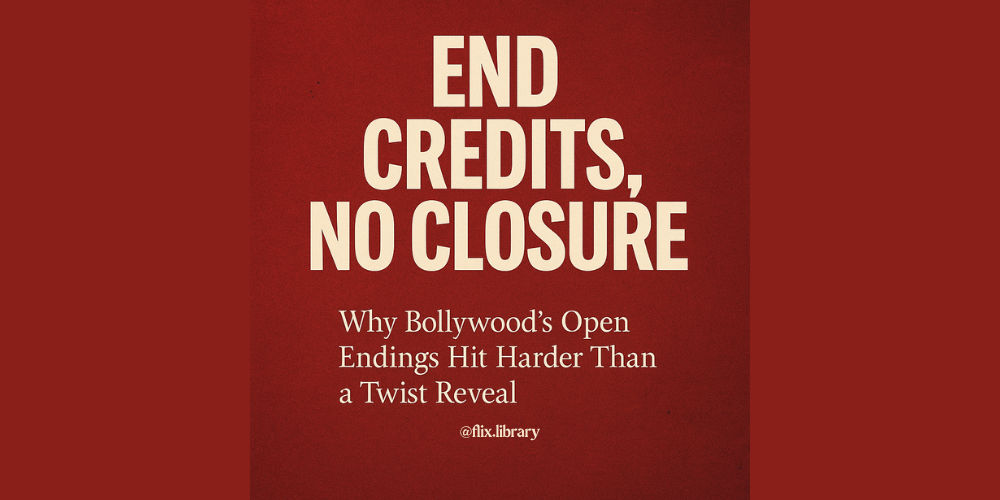
End Credits, No Closure: Why Bollywood’s Open Endings Hit Harder Than a Twist Reveal
It is not Christmas, but you’ve just watched Merry Christmas. The credits roll. The room is silent. You’re staring at the screen like it still owes you answers. Did she do it? Did he deserve it? Were we all pawns in a larger game we didn’t even know existed?
Welcome to the weird, wonderful world of Bollywood’s open endings, stories that don’t end so much as escape. Unlike your typical masala flick where justice is served with a side of slow-mo punches, these films pull the rug from under you, then hand it to you and say, “Figure it out.”
And we love it, don’t we?
Let’s “FlixTalk”, which have mastered the art of ambiguity. They don’t tie everything up with a neat little bow. They drop hints, raise eyebrows, and vanish into the night.
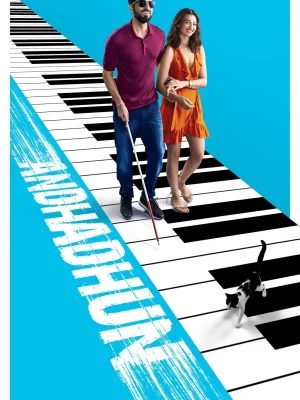 Andhadhun, for example, ends with Ayushmann Khurrana’s blind pianist either tapping a cane… or hiding something darker. The screen goes black, and suddenly the audience is in charge of the narrative.
Andhadhun, for example, ends with Ayushmann Khurrana’s blind pianist either tapping a cane… or hiding something darker. The screen goes black, and suddenly the audience is in charge of the narrative.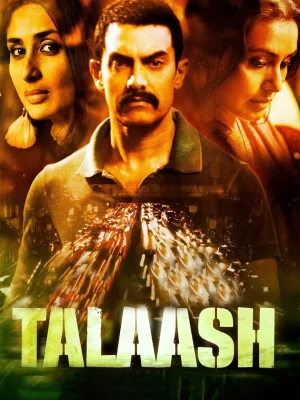 Talaash, the movie, leaves us haunted, questioning what was real and what was regret.
Talaash, the movie, leaves us haunted, questioning what was real and what was regret.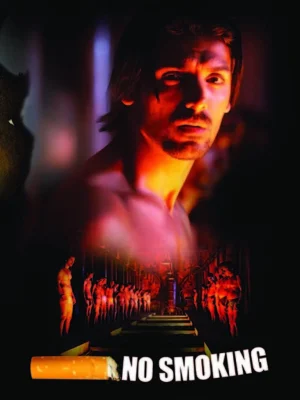 No Smoking? That film doesn’t end. It just... exits the building like a Kafkaesque fever dream.
No Smoking? That film doesn’t end. It just... exits the building like a Kafkaesque fever dream. Ship of Theseus (2012): A philosophical odyssey that asks questions instead of giving closure. Every ending feels like the start of another film in your head.
Ship of Theseus (2012): A philosophical odyssey that asks questions instead of giving closure. Every ending feels like the start of another film in your head.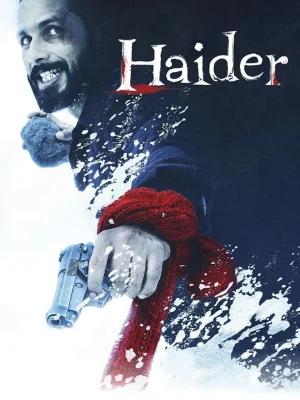 Haider (2014) technically does conclude, but the emotional and ideological ambiguity about revenge, justice, and madness? Wide open.
Haider (2014) technically does conclude, but the emotional and ideological ambiguity about revenge, justice, and madness? Wide open.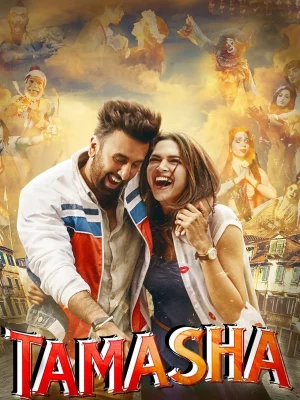 Tamasha (2015) It ends, but how it ends depends on how you read Ved’s transformation. Was it a happy ending? Or a high-functioning tragedy?
Tamasha (2015) It ends, but how it ends depends on how you read Ved’s transformation. Was it a happy ending? Or a high-functioning tragedy?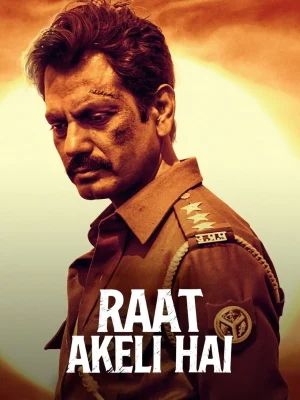 Raat Akeli Hai (2020) Sure, the mystery’s solved. But that morally grey resolution? Feels like it left the room with a smirk.
Raat Akeli Hai (2020) Sure, the mystery’s solved. But that morally grey resolution? Feels like it left the room with a smirk.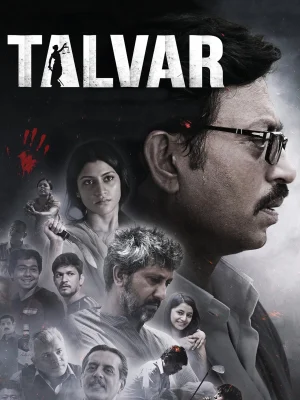 Talvar (2015) Based on the Aarushi case, this one deliberately keeps things murky. Truth is the casualty here.
Talvar (2015) Based on the Aarushi case, this one deliberately keeps things murky. Truth is the casualty here.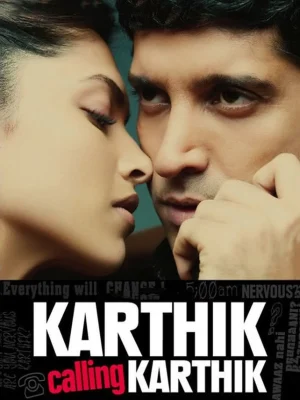 Karthik Calling Karthik (2010) Twist-heavy and then leaves you wondering: was he cured or just trading one delusion for another?
Karthik Calling Karthik (2010) Twist-heavy and then leaves you wondering: was he cured or just trading one delusion for another?
But these open endings aren’t just about being edgy or mysterious. They mirror something deeper, something we experience every day in real life and leadership. Because here’s the secret sauce: open endings reflect open questions. And that’s where FlixLibrary comes in.
In the world of project management, ambiguity is the default setting. Decisions often have to be made with partial data, shifting inputs, and a clock ticking in the background. There’s no cinematic monologue or final score to tell you if you nailed it. Just like in these films, sometimes you’re left wondering: Was that the right call? Did I miss something? Did it even matter? That uncertainty isn’t weakness. It’s realism.
Open endings also acknowledge a critical truth: everyone has their own version of reality. In Talvar, the investigation into a real-life murder case presents multiple perspectives, none of which are fully satisfying. It forces us to confront how fragile and fragmented our “truths” can be. As leaders, we often deal with this in conflict resolution, team alignment, and stakeholder management. Not everything has a clean answer. Sometimes the win is getting everyone to keep moving forward despite that.
What makes these movies even more powerful is how they respect their audience. They don’t spoon-feed meaning. They demand interpretation. In leadership, we call that empowerment. Great managers don’t just deliver answers, they create space for others to find their own. These films do the same. Watching them is an act of collaboration, not consumption.
And let’s not forget Gen Z, a generation that grows on complexity, nuance, and endless TikTok theory videos. We’re built for this. We don’t want the hero to walk into the sunset, we want to know what he’s thinking while he walks, and whether the sunset is actually a metaphor for unresolved trauma. These films are our playground because they invite obsession, discussion, and rewatches that hit differently every time.
So, do open endings mean no ending? Not at all. They just trust you more. They hand you the final brushstroke and ask you to complete the painting. They recognize that in art, as in life, sometimes closure is a myth. Sometimes, all you get is a question. And if you’re lucky, that question lingers longer than any tidy answer ever could.
So here’s to the stories that leave us hanging. To the films that fade to black without a bow. Because in that silence, something beautiful happens, we step in and finish the story ourselves.
Honourable Mentions: Bollywood Films That Flirt with the Open Ending Life
1. Masaan (2015) It ends on hope, but it’s quiet and fragile. You don’t know what the characters’ futures look like, only that they’ve chosen to move forward. Closure? Technically. Certainty? Nah.
2. NH10 (2015) Anushka Sharma goes full vigilante, and the final look she gives? You don’t know if it’s triumph, trauma, or both. It’s over, but the damage is ongoing.
3. Manorama Six Feet Under (2007) A noir-ish tale that wraps its mystery but leaves a trail of dust and doubt behind. You solve the case, but the world still feels off.
4. Kaun? (1999) RGV and Urmila at their unsettling best. The film ends, but your sense of trust in strangers and locked doors doesn’t. The final reveal leaves you shaken with no real emotional payoff, just unease.
5. Ugly (2013) Anurag Kashyap again with the gut-punch. The mystery unravels, but the tragedy cuts deeper than any twist. You don’t walk away satisfied, just hollow.
6. Badlapur (2015) Revenge gets served… but it’s cold, bitter, and rotting. The final scene with Varun Dhawan’s character walking away in a haze is closure with a question mark.
7. The Lunchbox (2013) Do they meet? Do they not? Ritesh Batra ends it with a poetic ambiguity that leaves romantic souls in limbo, and honestly, that’s the charm.
8. A Death in the Gunj (2016) Technically gives you the ending in the opening scene, but the journey there is so layered, so emotionally raw, that the finale still lands with quiet devastation.
